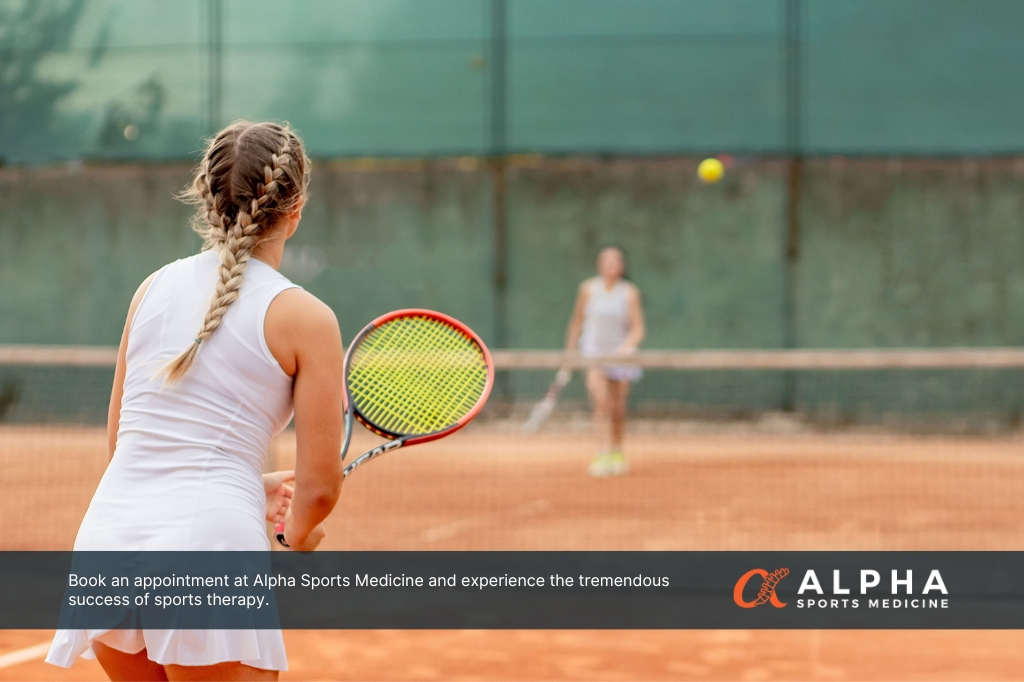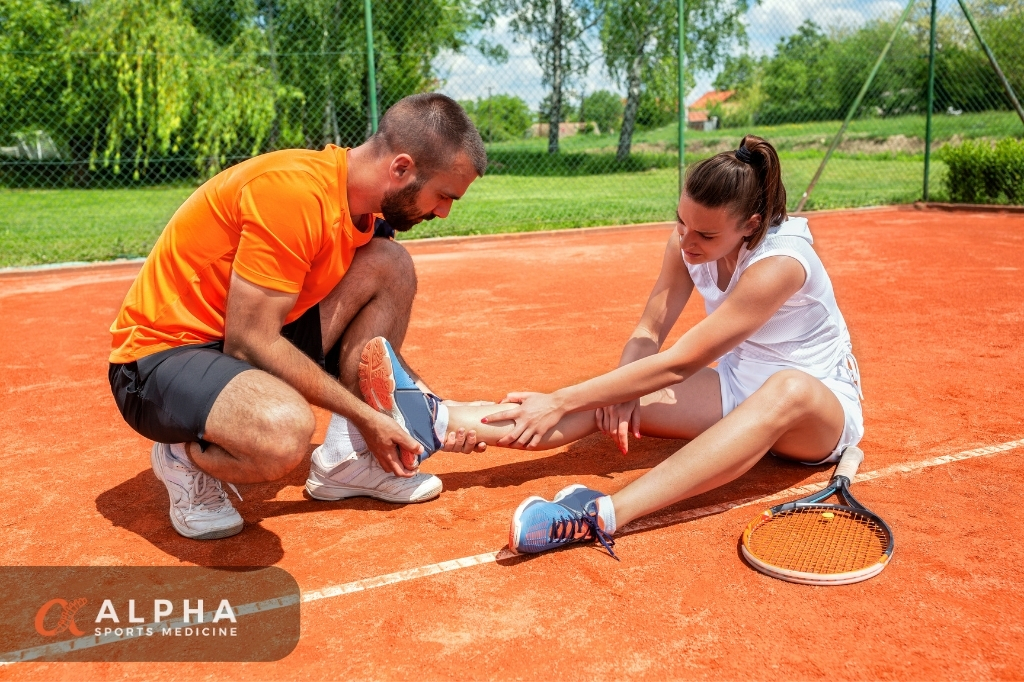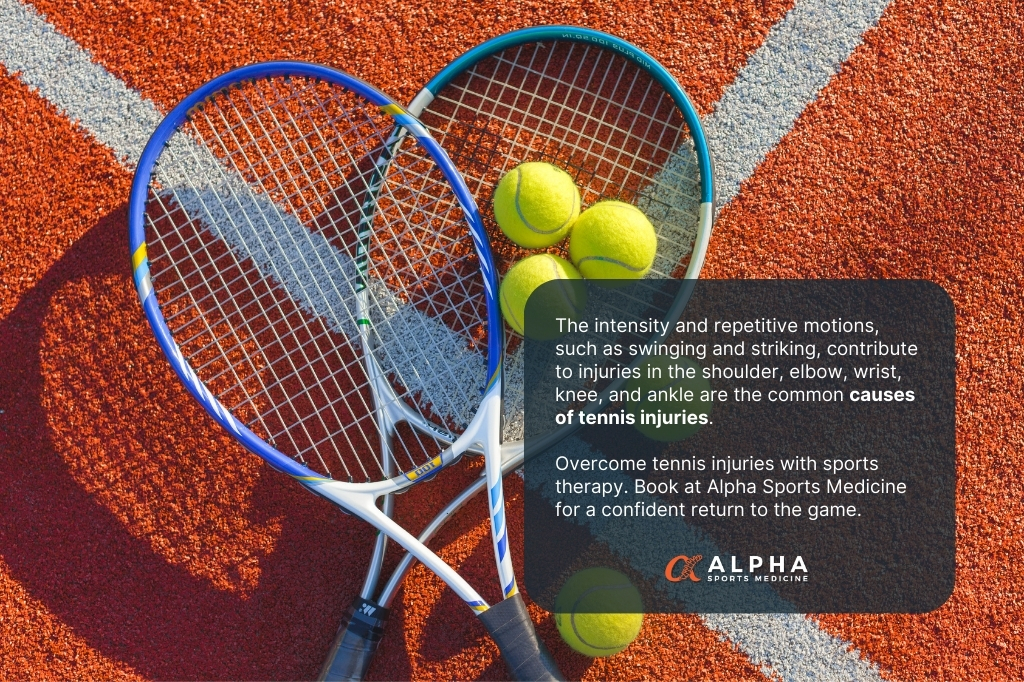Tennis is a highly demanding sport that can take a toll on the body. From strained muscles to joint pain, injuries are common among tennis players.
Tennis is a sport that requires agility, speed, and precision. With the constant movements, sudden stops, and repetitive motions, it’s no wonder that tennis players are prone to injuries. These injuries can not only be painful but can also hinder performance and even end careers.
Sports therapy has emerged as a highly effective treatment option for tennis injuries. It combines various techniques and exercises to not only heal the injury but also prevent future ones. If you’re a tennis player struggling with an injury or want to stay injury-free, sports therapy may be the answer you’ve been looking for.
Common causes of tennis injuries
Tennis is a fast-paced sport that involves agility, speed, endurance, coordination, and cardiovascular fitness to run, position yourself, swing, and strike the tennis ball.
Tennis players, however, can sustain injuries in the upper and lower limbs due to the intensity and repetitive motions of the sport, particularly the shoulder, elbow, wrist, knee, and ankle.
Chronic overuse is the leading cause of shoulder, elbow, and wrist injuries. The remaining injuries are acute or severe knee or ankle injuries.
Common tennis injuries
-
Wrist tendinitis
Wrist tendinitis is an inflammation of the wrist tendons that occurs over time. Swinging the racket can cause this in tennis players, especially if there is considerable wrist motion with each swing. When moving the wrist, pain can be felt on either side of the wrist or the palm, and clicking may be heard.
-
Tennis elbow
Tennis elbow (lateral epicondylitis) is a common overuse injury among tennis players that causes inflammation in the tendons connecting the forearm muscles to the outer part of the elbow. This injury is caused by repetitive motion, such as repeatedly swinging the tennis racquet and using improper backhand technique. Symptoms of tennis elbow include pain, a burning sensation on the outside of the elbow, and a decrease in grip strength.
-
Rotator cuff tendinitis and tears
Rotator cuff tendinitis is an inflammation of the rotator cuff tendons that causes shoulder pain and swelling and can progress to rotator cuff tendon tears. Excessive overhead serving and serving with the arm at 90 degrees are common causes of rotator cuff injuries.
-
Patellar tendinitis
Patellar tendinitis is characterised by inflammation or injury to the patellar tendon, which connects the kneecap to the top of the shinbone and aids in knee extension. Tennis players are prone to this ailment because of the recurrent jumping and landing during the game, numerous side-to-side fast motions of the knee, and playing on hard surfaces such as a synthetic or cement tennis court.
-
Lower back pain (stress fractures)
Tennis players may experience lower back pain or stress fractures due to certain movements and playing conditions. Twisting and side-bending during play, hyperextension of the back, and playing on hard courts can all contribute to this issue. Rapidly rotating the spine and hyperextending it can put tension on the vertebrae and strain the lower back muscles. Additionally, playing on a hard surface increases the impact on the lower back, which can also lead to pain.
-
Ankle sprains
Ankle sprains are common injuries caused by the multi-directional aspect of tennis, as well as the constant running, jumping, and landing that can cause a player’s ankle to turn. Playing on an uneven court can also contribute to an ankle sprain, which occurs when the ankle ligaments become overextended as a result of the foot twisting or turning beyond its usual range of motion.
Sports therapy treatment for tennis injuries
- Overall core muscle strengthening.
- Using biomechanical study of the feet and lower limbs to protect the feet from physical harm.
- Functional movement screening
- Stretching and strengthening certain body parts, such as the back, hamstrings, shoulder girdle, and forearm muscles.
- Tennis stroke analysis
- Avoiding exercises that may cause back pain.
- Manual therapy.
- Kinesio taping.
- Pain management.
- Soft tissue and joint mobilisation.
- Dry needling.
The risk of injuries can be mitigated or avoided by using optimal strength and fitness, the right technique, appropriate equipment, and targeted medical intervention.

Final thoughts on sports therapy for tennis injuries
Tennis players can benefit from the expertise of sports therapists who can design a customised strength and conditioning program to prevent injuries and provide targeted treatment for specific ailments. This helps players regain their strength and mobility, enabling them to confidently return to the court
Sports therapy for tennis injuries is not just about getting back on the court; it’s about coming back stronger and more resilient.
So, don’t let a tennis injury hold you back. Embrace the power of sports therapy and get back in the game!
Book an appointment at Alpha Sports Medicine and experience the tremendous success of sports therapy.
Author
-

Dr. Ashton Wilson began her studies with a three year Bachelor of Biomedical Science, where she majored in Anatomy and Physiology. She then switched to a more hands on approach, where she completed a three year Bachelor of Clinical Science and a two year Masters of Osteopathy. Ashton has since completed further education and is a qualified Strength and Conditioning Coach as well as a Kinetic Link Trainer.
View all posts







